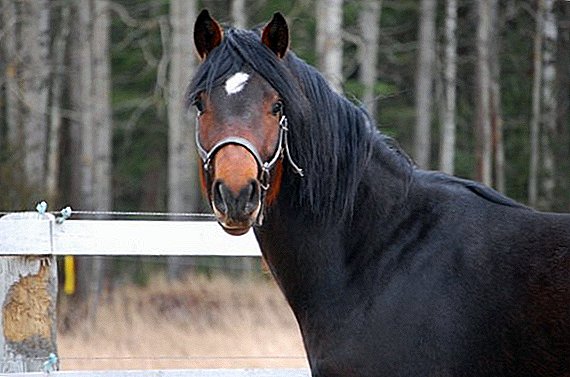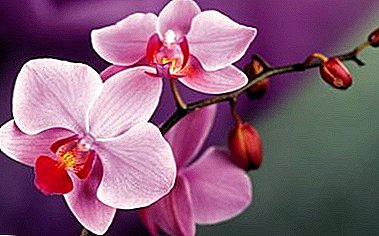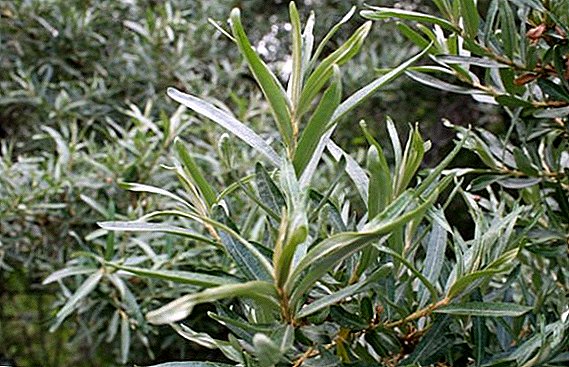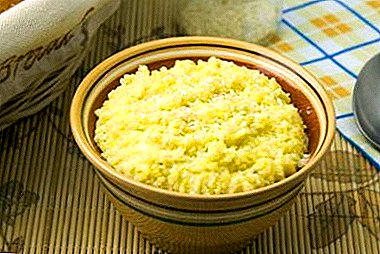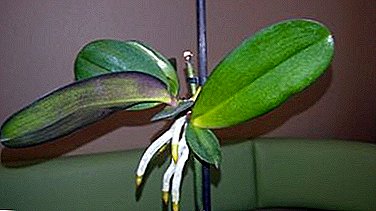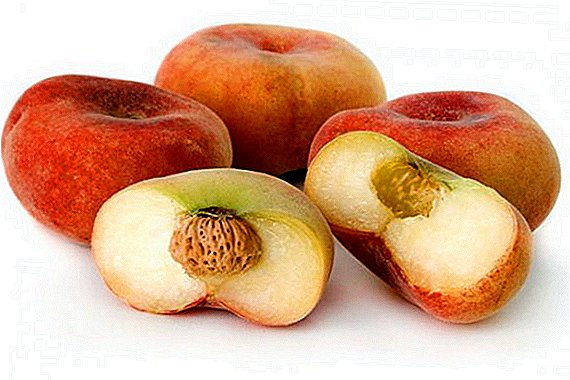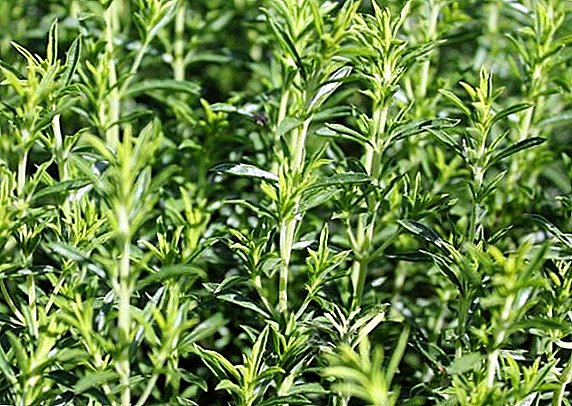 Due to consonance of names, many believe that savory and thyme - this is the same plant. Let's try to study the savory and thyme separately and identify the differences. After all, gardeners have not been able to come to a common opinion for a long time - savory and thyme or thyme are the same or different plants. In the article we will analyze the plants and find out how savory differs from thyme.
Due to consonance of names, many believe that savory and thyme - this is the same plant. Let's try to study the savory and thyme separately and identify the differences. After all, gardeners have not been able to come to a common opinion for a long time - savory and thyme or thyme are the same or different plants. In the article we will analyze the plants and find out how savory differs from thyme.
What is a savory?
Savory - herbaceous annual plant, reaching 40-50 cm in height. The stem is straight, slightly branched, 15-45 cm long. Leaves of gray-green shade of linear or linear-lanceolate type, leaf length about 15-25 mm. Small flowers of white, purple and pink color with patches of purple color are located in the axillary verticils. Savory blooms from July to August, in September the fruits ripen - brown nuts. Savory has another name - pepper grass.
Important! Harvesting medicinal raw materials of savory is done after the end of flowering, and thyme is done before.
 The composition of the plant savory consists of mineral salts, essential oils, thymol, cyneol, carvacrol, dipentene, cymol, borneol, carotene, phytoncids, vitamin C, magnesium, phosphorus, calcium, potassium, selenium, zinc, resins and tannins. The native land of savory is the Mediterranean; the plant was introduced to Europe in the 9th century as a budget seasoning. Currently, young leaves of savory are often used in cooking, because they give the dishes of vegetables, fish, cheese and baking a special expressive flavor.
The composition of the plant savory consists of mineral salts, essential oils, thymol, cyneol, carvacrol, dipentene, cymol, borneol, carotene, phytoncids, vitamin C, magnesium, phosphorus, calcium, potassium, selenium, zinc, resins and tannins. The native land of savory is the Mediterranean; the plant was introduced to Europe in the 9th century as a budget seasoning. Currently, young leaves of savory are often used in cooking, because they give the dishes of vegetables, fish, cheese and baking a special expressive flavor.
Dried savory goes well with rabbit meat, poultry and beef. The cosmetic industry uses essential oil in the manufacture of its products.
For the treatment of savory is used to obtain the result in the form of antiseptic, diaphoretic, analgesic, tonic, diuretic, astringent, antispasmodic and expectorant effect. Savory infusions will relieve worms, eliminate toxins, improve blood composition, clear the kidneys and liver, normalize sugar in diabetes, help with heart disease and tachycardia.
Description and types of thyme
 Thyme (shrub) - perennial up to 30 cm tall, numerous woody stems standing or lying. Small petiolate leaves of elongated oval shape with convex veins are arranged oppositely. Almost all summer blooms with small flowers of white or purple-pink hue, which form the capitate elongated inflorescence.
Thyme (shrub) - perennial up to 30 cm tall, numerous woody stems standing or lying. Small petiolate leaves of elongated oval shape with convex veins are arranged oppositely. Almost all summer blooms with small flowers of white or purple-pink hue, which form the capitate elongated inflorescence.
By September, the fruits ripen in the form of boxes, in which there are four balls-nut. They are used as a bitter spice in cooking. Garden thyme is a kind of perennial thyme with white flowers, slightly smaller, its aroma is the classic scent of thyme.
The composition of the plant: thyme consists of essential oils, vitamin C, flavonoids, carotene, magnesium, calcium, potassium, tannins and bitter substances, organic acids, saponins and biologically active substances thymol, borneol and cymoleum.
 Thyme herb in fresh or dried form is used as seasoning to meat, fish and first courses, when preserving vegetables and making tea. Preparations of thyme used as an anticonvulsant, antibacterial, analgesic, anti-inflammatory, astringent, expectorant, choleretic, diuretic, sedative, anthelmintic and wound healing remedy.
Thyme herb in fresh or dried form is used as seasoning to meat, fish and first courses, when preserving vegetables and making tea. Preparations of thyme used as an anticonvulsant, antibacterial, analgesic, anti-inflammatory, astringent, expectorant, choleretic, diuretic, sedative, anthelmintic and wound healing remedy.
Did you know? Thyme and savory have a bactericidal effect equally well.
In total there are more than 150 species of thyme. Most Popular:
- common thyme is a low-growing variety up to 15 cm tall, the underside of small leaves is pubescent, the flowers are white or pale lilac. A variety of this type of thyme - lemon, young leaves have a yellowish tint, over time, change color to pale green. A heat-loving plant is distinguished by the fragrance of a spicy lemon scent. Gardeners like Elfin variety, whose height is up to 5 cm, and the plant itself resembles a dense cloud with a diameter of 15 cm.
- creeping thyme - perennial up to 15 cm tall, prefers a slightly alkaline, moderately nutritious earth. Stems of this type of thyme creeping, shoots have pubescence, leaves are lancet-like up to 10 mm long, small flowers of white and pink color form capitate inflorescence. Flowering occurs in the second half of summer. It is thyme creeping and known as thyme.
- Bogorodsky Cemko - the stems of this variety are thin creeping, capable of rooting, the leaves are gray-green, have a bitter taste and bright aroma, pink or purple flowers.
- rainbow - plant height up to 25 cm, standing shoots, leaves gray-green with a specific bloom, small flowers of purple-pink shade arranged in groups in the axils of the foliage.
Important! As a seasoning, thyme is added to the dish at the beginning of cooking, and savory - a couple of minutes until cooked.
 Sometimes the question arises: how does thyme differ from thyme? Gardeners and traditional healers hold the general opinion that thyme and thyme are one and the same plant. A creeping thyme variety is thyme. Thyme and thyme are believed to be excellent in appearance - thyme has a thin stem with bright inflorescences and a long main root, and thyme has a wide, gently sloping crown and a more branched root system. External differences do not affect the beneficial properties of plants, because they are often identified.
Sometimes the question arises: how does thyme differ from thyme? Gardeners and traditional healers hold the general opinion that thyme and thyme are one and the same plant. A creeping thyme variety is thyme. Thyme and thyme are believed to be excellent in appearance - thyme has a thin stem with bright inflorescences and a long main root, and thyme has a wide, gently sloping crown and a more branched root system. External differences do not affect the beneficial properties of plants, because they are often identified.
Savory and Thyme: what is the difference
Savory and Thyme - These are plants of the Labiaceae family, the ground parts of which contain a large amount of essential oils and have found decent use for medicinal purposes and as spicy seasonings to various dishes. Let's try to understand the plants savory and thyme and what is the difference between them.
To begin with, it should be noted that savory and thyme have a difference in the official name: savory is kondari or satury, and thyme is thyme. Outwardly, these plants are completely different, savory is taller and grows in the form of a bush, thyme is a low-growing, beautifully flowering plant that, spreading along the ground, covers it with a thick carpet. In addition, plants have a different form of leaves and flowers. The savory aroma is rich spicy and balsamic, the thyme has a lighter fresh aroma of spicy herbs.
Did you know? A fresh leaf of savory is able to relieve itching and pain after an insect bite and reduce swelling.
 The origin of thyme and savory is different: Thyme was used in ancient Egypt for embalming titled rulers, and savory was used by the inhabitants of ancient Greece as a seasoning for food.. Thyme and savory due to their peculiarities to grow and crawl along the ground with colorful coating are used in the design of flowerbeds, alpine slides and pathways. Growing these useful plants in your backyard, you will receive aromatic seasonings for various dishes, as well as valuable medicinal raw materials that help with ailments.
The origin of thyme and savory is different: Thyme was used in ancient Egypt for embalming titled rulers, and savory was used by the inhabitants of ancient Greece as a seasoning for food.. Thyme and savory due to their peculiarities to grow and crawl along the ground with colorful coating are used in the design of flowerbeds, alpine slides and pathways. Growing these useful plants in your backyard, you will receive aromatic seasonings for various dishes, as well as valuable medicinal raw materials that help with ailments.


